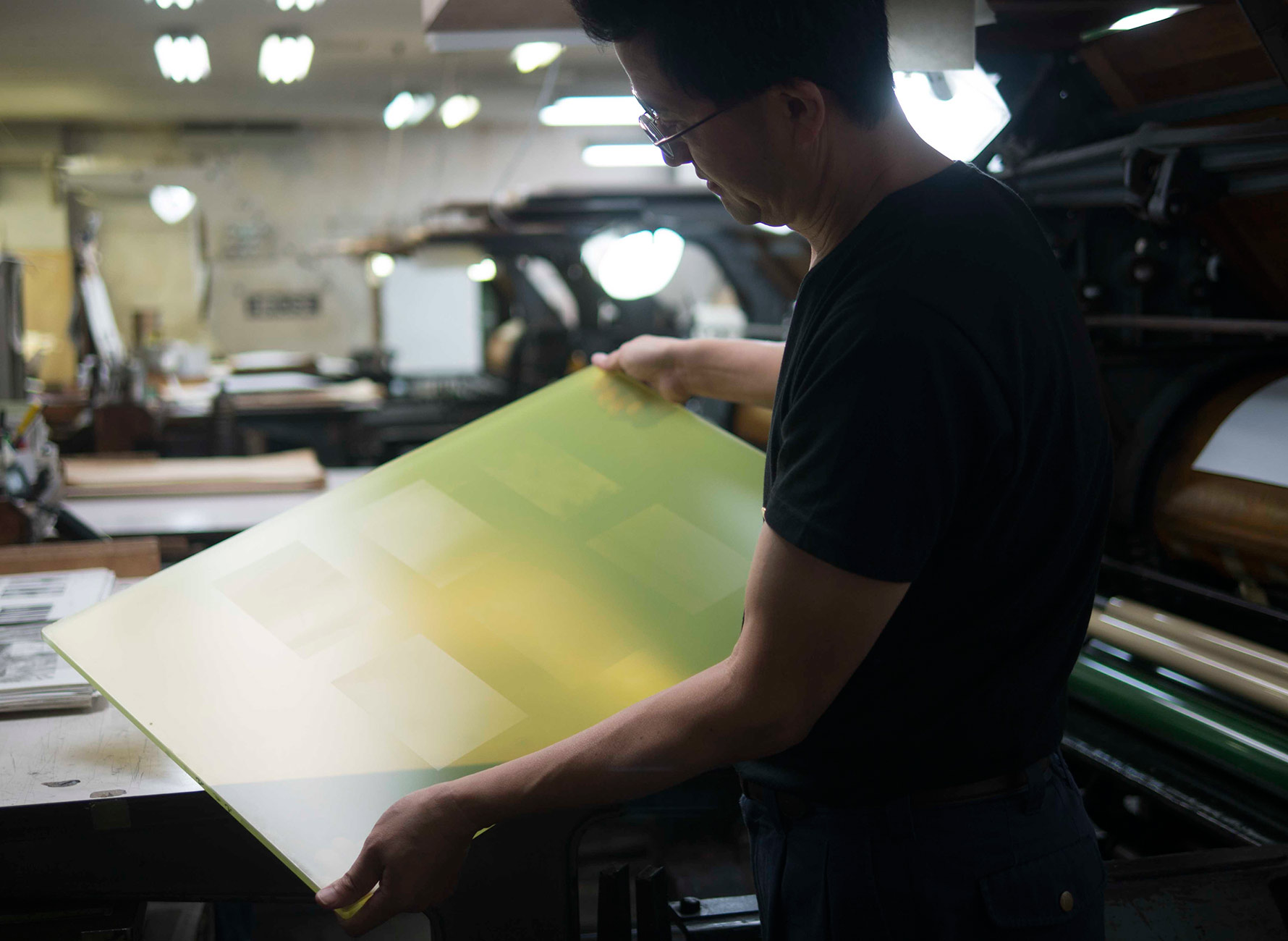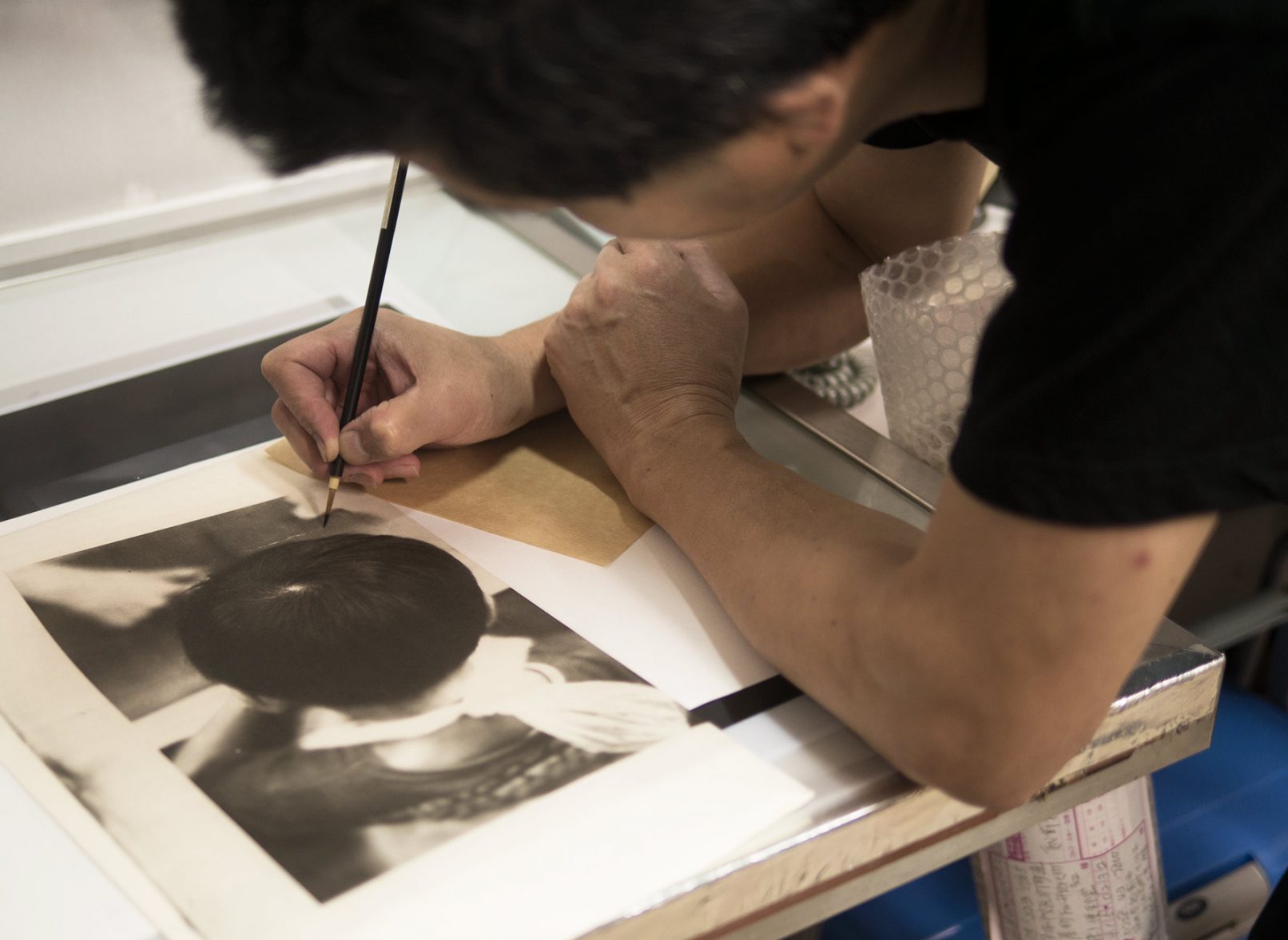Collotype Printing Process
Collotype – Printing Process
Self published book with the support of Benrido Collotype Academy and Fundação Oriente, October \ November 2016

Images Joana Durães; Texts and Research Hideko. G. Ono; Format 25 x 19 cm, 14 pages; Technique Collotype and B/W laser prints on Washi paper + Watoji binding, hardcover; Collotype prints Master printer Osamu Yamamoto and Joana Durães; Special edition 4 copies; With the support of Benrido Collotype Atelier and Fundação Oriente
This book serves as an extension of a month-long residency that took place in Kyoto, Japan, as part of a new Academy. Under the theme of collotype, this publication includes research texts and images, along with a set of original collotype prints created during the residency. Its purpose is to deepen the understanding of the process and to provide insights into an alternative collotype technique used by Benrido, which involves a Diazo solution.
Collotype prints
Containing several images printed using the new Diazo collotype process, the images were printed from both analog and digital sources using 35mm film and digital data. The cover image of this book also includes typography printed using the same Diazo process as the images. This variety allows a broader understanding of the capabilities of this printing process in the reproduction of both text and image.
Developed in France in 1855 by Alphonse-Louis Poitevin, the collotype process acts on its photographical capability to reproduce works of art and objects of all materials, in printed form. By approximating the full array of perceptible tones, collotype has been revered for its ability to faithfully render photographic images in unmatched detail. The process may be applied to a wide variety of fine-art substrates from handmade papers and textiles made from various fibers, providing artists with a wide latitude in the selection of materials. The irregularities that result from this analog process imbues each impression with the unique qualities of handmade works of art.








